It’s said that beauty is in the eye of the beholder. Margaret Wolff Hungerford’s timeless 1878 idiom loses its meaning when surrounding individuals repeatedly point out one’s “flaws,” all of which adhere to unrealistic patriarchal beauty standards. Subjectivity vanishes and both pain and self-hatred emerge. This conversation often feels like beating a dead horse; it’s exhausting. Is there anything new to bring to the undying issue of humanity’s fraught relationship with physical beauty? Well, as the Ozempic craze continues and the “ballet body” aesthetic soars, as noted by the American Society of Plastic Surgeons (ASPS), perhaps beating a dead horse is all we have.
New or not, Norwegian writer-director Emilie Blichfeldt has plenty to say. Her feature directorial debut, 2025’s The Ugly Stepsister, is a stunningly visceral take on the classic Cinderella tale — from an “ugly” stepsister’s point of view. The Sundance Film Festival sensation follows Elvira (Lea Myren) as she goes to great lengths to appeal to the kingdom’s eligible bachelor, His Royal Highness, Prince Julian (Isac Calmroth), competing with all the other “noble virgins,” including her effortlessly spellbinding stepsister, Agnes (Thea Sofie Loch Naess).
With little money to her name, Elvira’s mother, Rebekka (Ane Dahl Torp), relies on her supposedly unsightly daughter to be wedded to the prince and bring financial stability. Unfortunately, Rebekka’s younger daughter, Alma (Flo Fagerli) — aka the film’s only voice of reason — is no use, as she “hasn’t even started bleeding.” The new widow throws spare funds at various body modifications and alterations for Elvira, sending her spiraling into a dangerous and utterly grotesque quest for outer beauty. Does a hammer nose job, a swallowed tapeworm egg, and sew-in eyelash extensions make a drab gal the belle of the ball?
‘Cinderella’ Gets a Body Horror Update
The Ugly Stepsister
- Release Date
-
April 18, 2025
- Runtime
-
105 minutes
- Director
-
Emilie Kristine Blichfeldt
- Writers
-
Emilie Kristine Blichfeldt
- Producers
-
Christian Torpe, Jesper Morthorst
-

Lea Mathilde Skar-Myren
Elvira
-

Thea Sofie Loch Næss
Agnes
- Writer-director Emilie Blichfeldt?s vision is as clear as it is terrifying, resulting in a very unique film.
- Lea Myren delivers a breakout performance unlike anything in recent memory.
- Costuming, makeup, set decoration, coloring, score, and cinematography all come together seamlessly to create a whole world.
In The Ugly Stepsister, Emilie Blichfeldt gleefully serves her audience a coming-of-age work brimming with puss, blood, gastric fluids, and maggots, all coated in pink coquette bows. In an exclusive interview with MovieWeb, she described the film as a “beauty horror,” noting that the juxtaposition and the paradox of nuanced beauty and ugliness are at the core of the film.
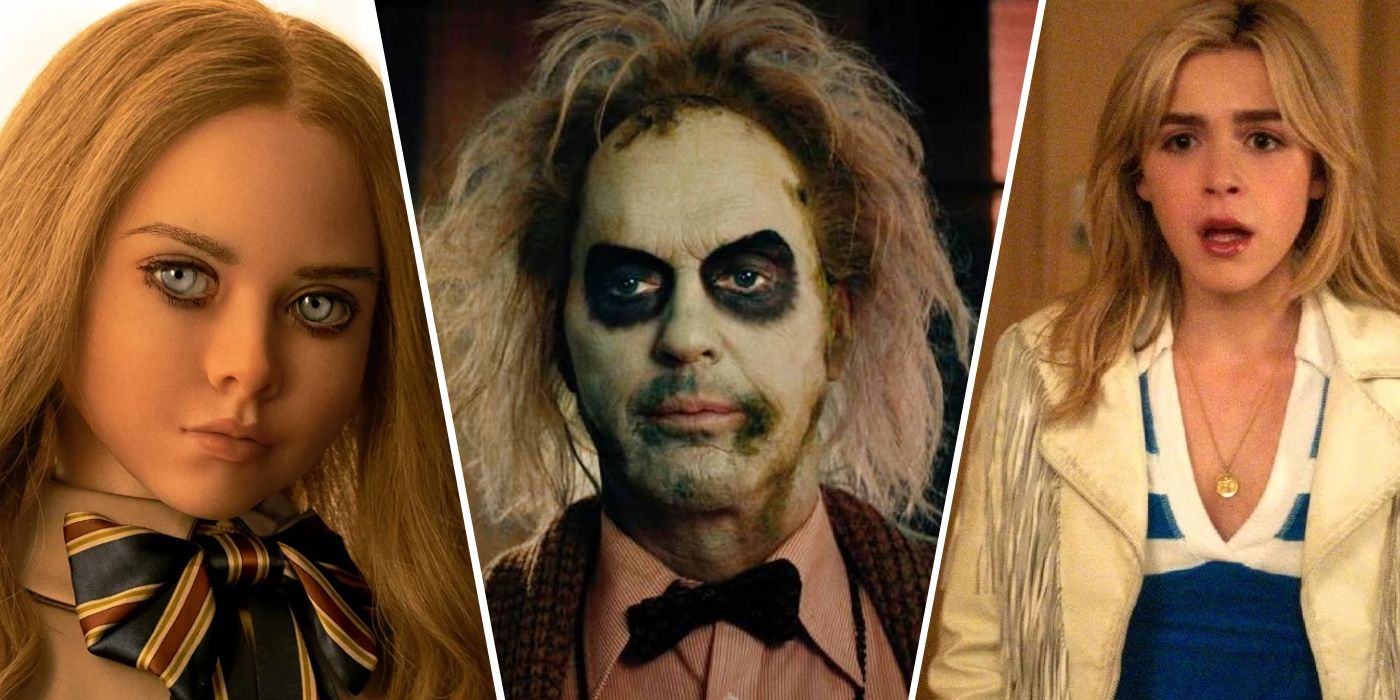
Related
10 Most Perfect Horror Comedies of the 2020s (So Far)
These 2020s horror comedies have shown how this decade has, so far, managed to deliver absurd yet thrilling cinematic experiences.
Hoping to “lure in a more feminine audience that wouldn’t necessarily go and see something [this] gross,” Blichfeldt has crafted a surreal feminist body horror fairy tale with lasting relevancy. It’s as if Sofia Coppola, Coralie Fargeat, and David Cronenberg had a threesome, somehow spawning The Ugly Stepsister — a grand cinematic compliment if there ever was one.
The Ugly Stepsister is a twisted cocktail of Charles Perrault’s iconic version of the story and the more violent Brothers Grimm version from 1812, which sees Cinderella’s stepsisters try on a single golden slipper left at the ball. Their mother says, “when you are queen you will no longer have to go on foot,” instructing them to sever their toes and slice their heels to fit the tiny shoe. It’s a barbaric, frenzied act of desperation — to be seen as a trophy, to be loved, to be accepted by both a maternal figure and a powerful upper-class man.
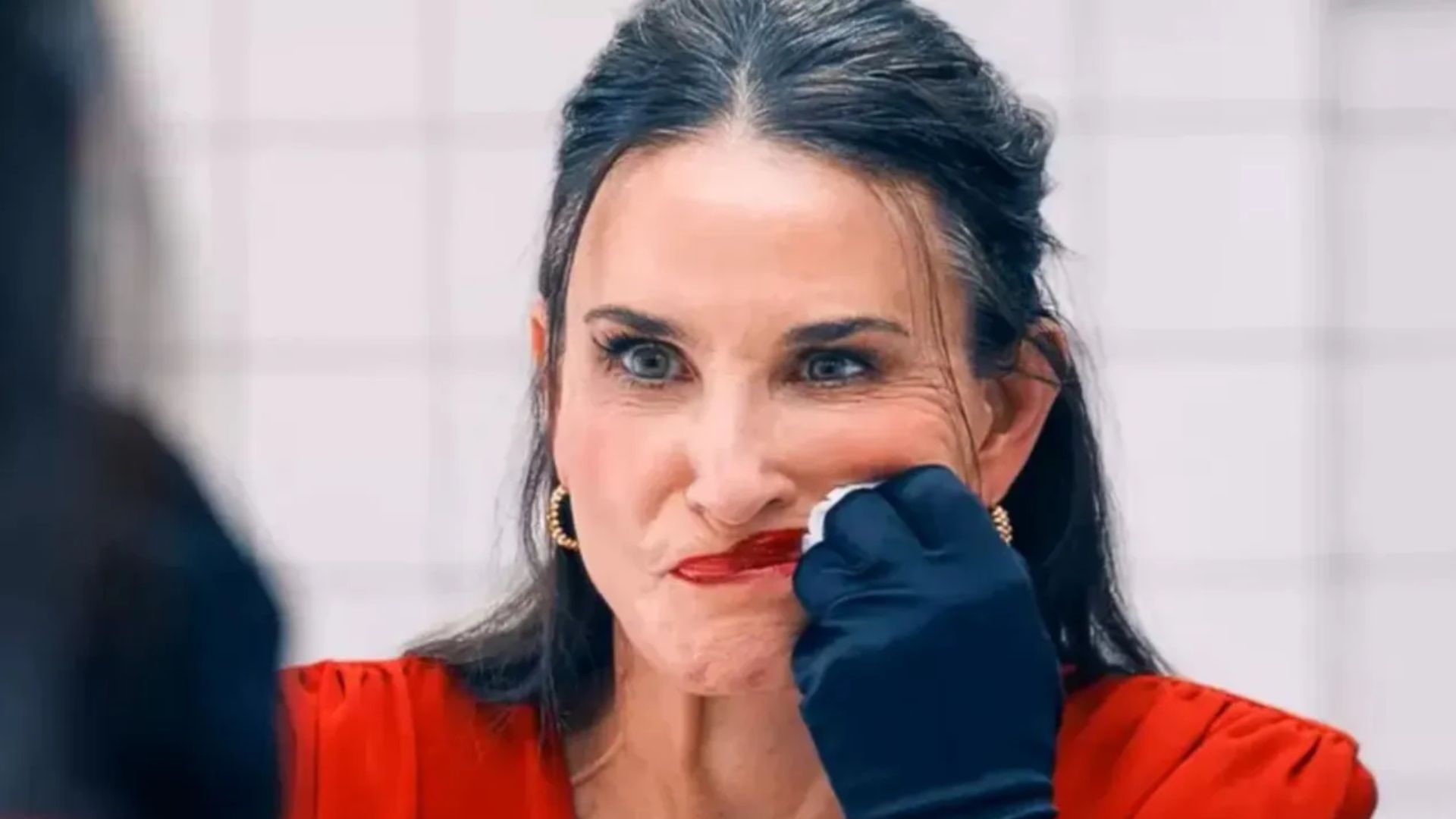
Related
10 Weird and Gross Body Horror Movies Like The Substance
These body horror movies are particularly fascinating because like The Substance, they burrow into your fears and take you on a wild ride.
The overwrought personalities of the ugly stepsisters are often depicted as two-dimensional, as is the woe-is-me damsel-in-distress persona of Cinderella. Blichfeldt doesn’t subscribe to this lack of nuance, instead writing characters who feel like real people, who feel like us. They’re filled with selfishness, rage, lust, jealousy, pain, whimsy, and determination. No one is innocent and nothing is black-and-white. Heightened sibling rivalry, mommy issues, sexual harassment and assault, disordered eating, and an undying battle with one’s own body are deeply human issues that would make Walt Disney clutch his pearls.
Historic Fairy Tale Characters Infused with Unflinching Humanity
In The Ugly Stepsister, Agnes (aka Cinderella) isn’t exactly angelic, and there’s no reason for her to be. She’s a normal malcontent teen who’s just lost her dear father, Otto (Ralph Carlsson). Her new wicked stepmother, Rebekka, refuses to give him a proper burial, leaving his body to rot. Rebekka becomes an abusive figure, and marrying Prince Julian is Agnes’ only way out of an oppressive life. Meanwhile, her stepsister Elvira’s jealousy of Agnes’s natural beauty and charm intensifies. Doves and mice are drawn to Agnes, as are men, and the ease of her innate sensual allure eats at Elvira. Loose strands of long blonde hair frame her face in an “I woke up like this” Beyoncé way.
In contrast, Elvira routinely pulls her hair into manicured rag curls, unknowingly exuding an overtly childish aesthetic. The first act paints her as a wide-eyed 19th-century Shirley Temple with orthodontic braces, full apple cheeks, and a bumpy nose — her cherub-like facial features and slightly convex snoot being the beautiful work of prosthetics artist Thomas Foldberg.
With surrounding influences like Rebekka and the appropriately named finishing school head Sophie von Kronenberg (Cecilia Forss) — both of whom carry body image issues of their own — fitting the beauty norm soon becomes all Elvira can think about. Thinness and outer perfection consume her, and she resents Agnes in the revolting process. They resent each other, and Lea Myren and Thea Sofie Loch Naess bring the previously unexplored complexities of this relationship to life onscreen with ferocity and vulnerability.
Patriarchal Beauty Standards Are a Parasitic Horror
Blichfeldt’s ethereal world is fully fleshed out, complete with 19th-century bonnets and ribbon chokers, a handsome poet prince, helpful critters, a finishing school, and a glossy ball. Elvira’s dream sequences are guided by soothing harps and synthesizers and saturated in pastels, as are various makeup looks, floral arrangements, pastries, gowns, and fonts. Oscar winner Sofia Coppola may as well have kissed this cotton candy fantasy, blessing the Poland-based set with her signature hyper-femininity. However, it’s all a garish facade, barely masking the brutality and absurdism of burgeoning womanhood in a world where impeccable fairness is currency.
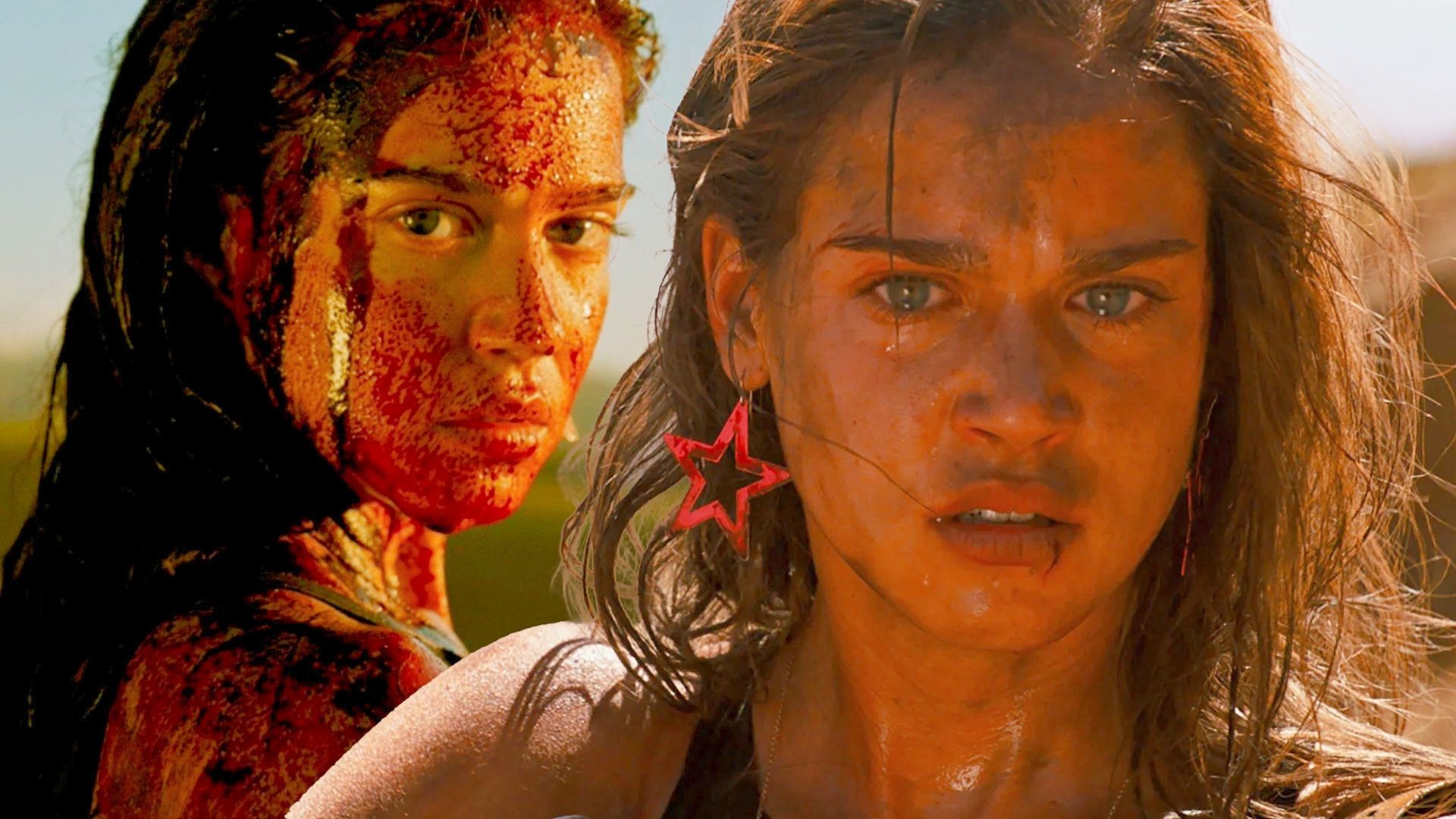
Related
‘The Substance’ Fans Need to Watch the Director’s Feminist Horror Debut
Coralie Fargeat’s debut is a bloody, feminist take on a historically sexist genre.
In the nightmarish oxymoron of The Ugly Stepsister film, beauty is ugly. It’s clinical, sickening, horrid, excruciatingly painful, and devoid of payoff. There are countless think pieces and essays on the exploitative nature of beauty-centric industries, including the thriving plastic surgery market, detailing how they feed on female insecurities and keep women in a state of self-loathing stagnancy. It’s a point Blichfeldt hits home with little subtlety, as Elvira doesn’t get a particularly happy ending.
After chasing society’s idea of beauty over the course of four full moons, her final form is bloody and stumpy. The ghastly charade had a questionable doctor chiseling her face and sewing spidery lashes into her eyelids (a scene reminiscent of the iconic “Ludovico Technique” scene in Stanley Kubrick’s A Clockwork Orange). Sophie von Kronenberg “gifted” her a tapeworm egg and an antidote, presented in a darling little pillbox. “I’m going to marry the prince. Once I become thin and beautiful, I just take the antidote,” Elvira tells a horrified Alma. Self-inflicted taeniasis is pretty dark, especially when it’s all for a misogynistic rich pretty boy who writes eye-roll-inducing poetry about his penis.
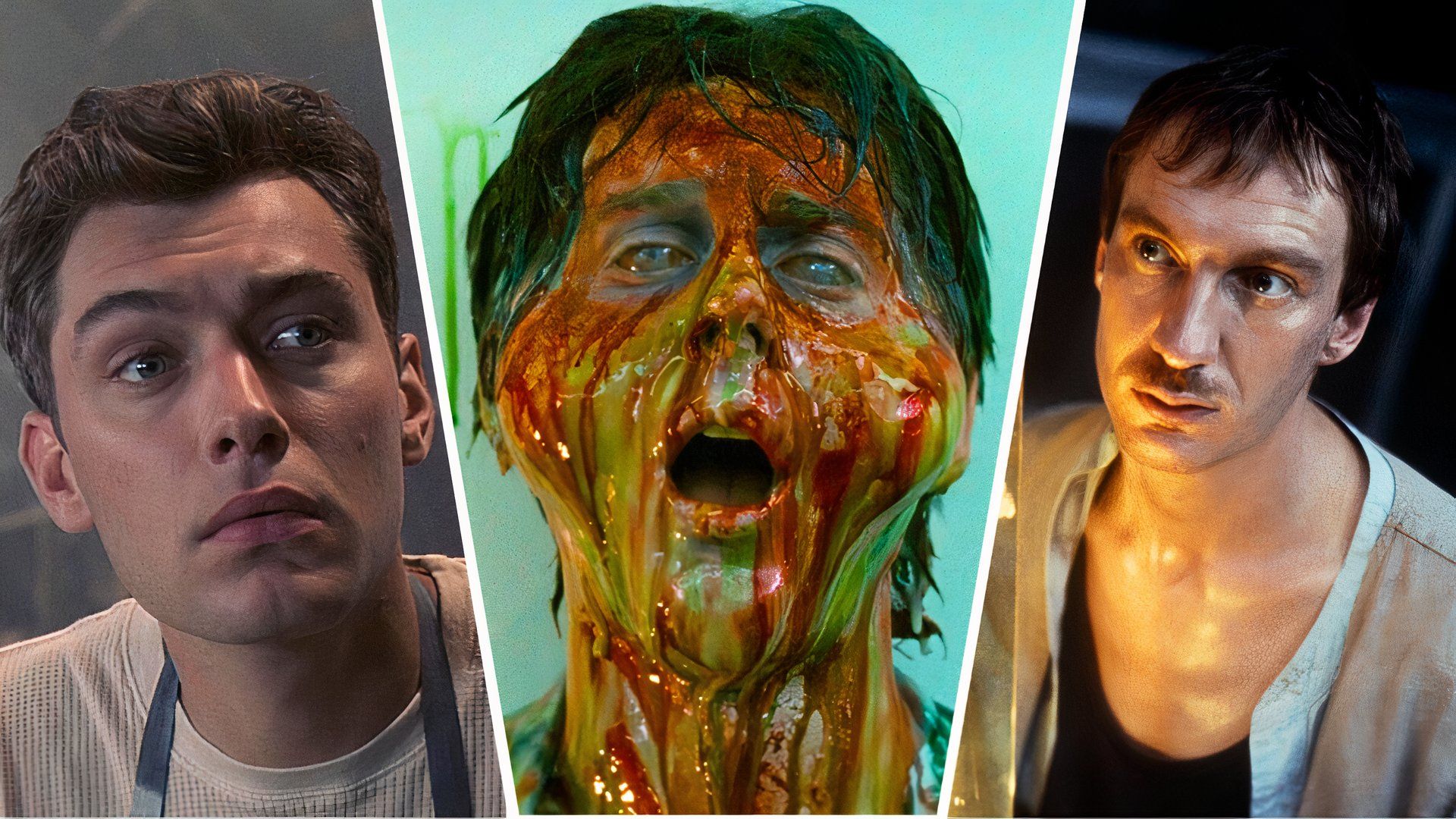
Related
10 Disgustingly Perfect ’90s Body Horror Movies
Monstrous mutations and twisted transformations, these are the 10 best body horror movies of the ’90s
The Horror of Reducing Yourself to a Body
Prince Julian hardly speaks throughout the 110-minute runtime. Unfortunately, the realism lies in Elvira’s lasting desire for the prince, even after a vile altercation in the woods with him and his buddies. But little does she know, said desire is fraudulent, as Elvira verily wishes to be an object of desire. To be the belle of the ball and gain approval from society, to be crowned worthy of love and affection, to be seen in a sea of noble virgins — it’s all a girl can ask for, really. Hypothetically, when Elvira realizes there is no antidote to this invisible societal parasite, that’s when she’ll at last be able to remove the corset and exhale.
Overarching metaphors aside, much of The Ugly Stepsister‘s obscenity and body horror imagery is quite literal, leaving little room for differing interpretations. Sometimes, a chopped toe is a chopped toe, or however the saying goes. Still, Blichfeldt’s feminist satire interests are splayed out in front of the audience with confidence and empathy, and that’s more than enough.
“By magic, The Substance came out the year before [The Ugly Stepsister] and really trailblazed and showed the audience that body horror is for us all,” Blichfeldt told Movieweb. “I think it’s such a powerful genre also for female narratives because being a woman is a very bodily experience. … We saw with Me Too how easily the most powerful woman can be reduced to a body … and that’s horror, that’s a nightmare.”
Blichfeldt dissects heavy issues with a satirical scalpel, spitting on Disney’s beloved Cinderella before winking. And with that, a new international auteur has entered the chat.









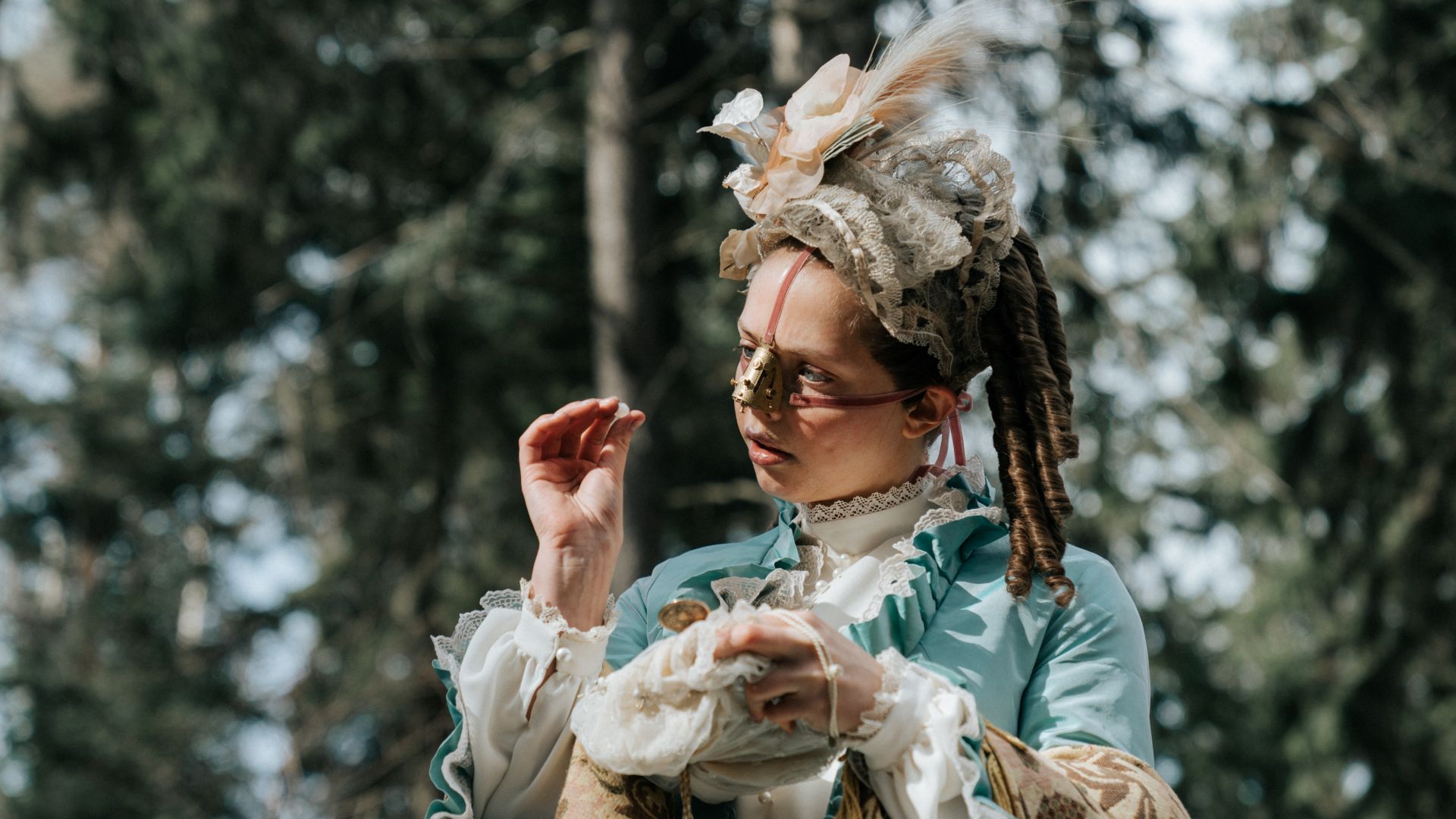








Add Comment